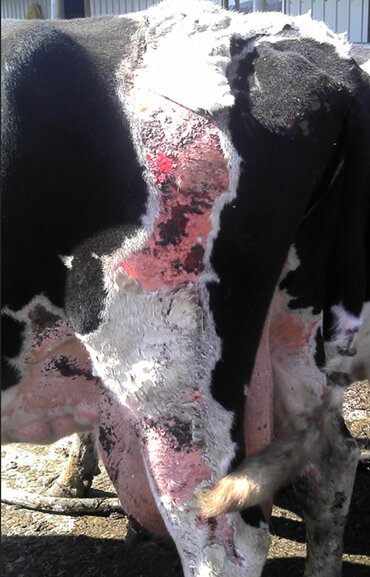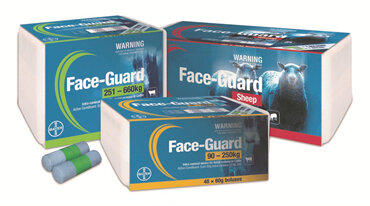Franklin Vets
Franklin Vets - excellence in veterinary care for dairy, farming, lifestyle, equine and household pets. BESTPRACTICE ACCREDITED NZ.

The disease is caused by a fungal spore called Pithomyces chartarum. The fungus grows on dead plant material found at the base of the pasture – especially perennial rye grass – releasing spores (sporulation) during the summer months, usually between January and May.
Under warm and humid conditions, spore numbers can rise rapidly. Areas susceptible to higher spore counts are around urine patches, areas sheltered by hedges, and northern and western facing slopes.
When fungal spores are ingested they release a toxin called sporidesmin which causes damage to the bile system of the liver. This, in turn, results in the accumulation of other toxins in the animal’s bloodstream, leading to poor health, low production, and potentially death.
An important secondary effect of the liver damage is called ‘photosensitisation’, visible as a severe and painful inflammation of unpigmented areas and exposed skin such as the udder, teats, ears and face (this is how the disease got its name). But it’s important to note that the disease is not always visible:
Around 70% of a mob may be affected if just 5% of the animals show symptoms of facial eczema.
Within 1 -2 days of exposure to high spore counts, in milking cows there can be a dramatic short-term drop in milk production which is thought to precede liver damage.
The following can result within 1 – 2 weeks after exposure to high spore counts in affected animals:

GGT is an enzyme that is released into the bloodstream by the injured liver when animals are affected by facial eczema. Talk to us about testing for GGT to identify sick animals, and monitor the efficacy of your prevention plan.
THE BEST CURE IS PREVENTION:
Use of zinc preventively:
Scientists aren’t sure how zinc works, but it prevents sporidesmin from starting the chain reaction leading to liver damage.
Face-Guard is the unique zinc bolus for cattle and sheep:
Face-Guard is registered under the ACVM Act 1997. www.bayeranimal.co.nz | 0800 927 733.
Copper plays a large role in the toxicity of sporidesmin. This means you should not administer copper to your animals during the facial eczema season. Copper also binds to zinc, making Face-Guard and other zinc-based treatments less effective. You can resume copper supplementation after the risk period has finished.
For more information on facial eczema, call or visit your local clinic.
Check out the latest spore counts in your area.